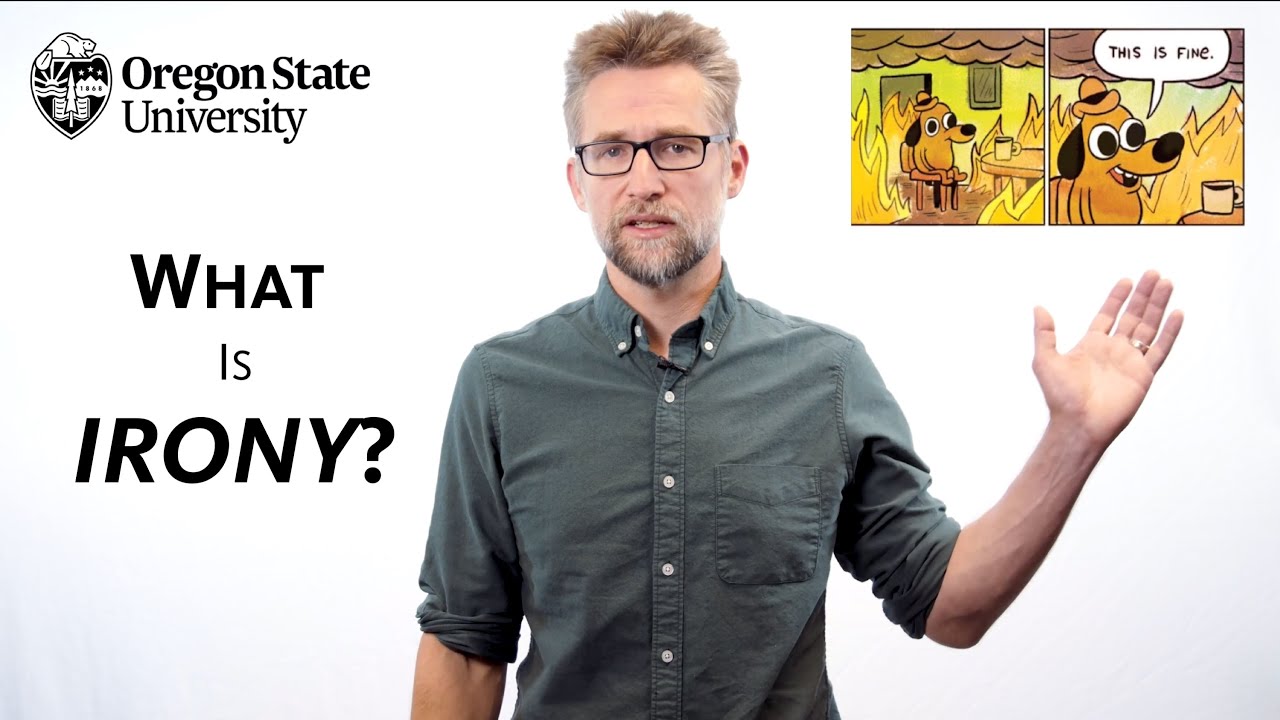Techniques of humour - puns, irony, sarcasm and satire
Summary
TLDRIn this video, the presenter explores key humor techniques commonly found in English exams, including puns, sarcasm, verbal irony, situational irony, and satire. Through clear examples, the video explains how these techniques work and how to identify them in both written and visual contexts. Puns play on words, sarcasm involves mockery, verbal irony contrasts what is said with what is meant, situational irony flips expectations, and satire highlights serious issues through humor. The video offers practical advice for recognizing and analyzing these techniques to enhance understanding and exam performance.
Takeaways
- 😀 Understanding humor techniques is important for advertising, cartoons, and visual literacy questions in English exams.
- 😀 A **pun** is a clever play on words, often using homophones or idioms to create dual meanings. Example: 'periodically' in the science pun.
- 😀 When answering a **pun** question, always quote the word being played on and explain its two potential meanings.
- 😀 **Sarcasm** involves saying the opposite of what is meant, often with the intention to insult or mock someone.
- 😀 In sarcasm, inverted commas can be a clue that the words spoken are not meant literally, but sarcastically.
- 😀 **Verbal irony** is similar to sarcasm but lacks the intention to insult. It simply involves saying the opposite of what is meant.
- 😀 When identifying **verbal irony**, explain the contrast between what is said and what is actually meant without suggesting insult.
- 😀 **Situational irony** occurs when the expected outcome of a situation is different from what actually happens. Example: taking the escalator to a gym instead of the stairs.
- 😀 **Satire** uses humor, irony, and wit to criticize serious issues, drawing attention to them in a unique way. Example: mocking makeshift taxi repairs to highlight safety concerns.
- 😀 Satire is not just about making fun of a serious situation, but about raising awareness of the severity of that issue through humor.
- 😀 To effectively answer questions on humor techniques, identify the technique used, quote the relevant words or phrases, and explain how humor is created.
Q & A
What is the importance of understanding humor techniques in English exams?
-Understanding humor techniques is crucial for excelling in English exams, particularly for questions related to visual literacy, cartoons, and advertising. It helps students analyze and explain how humor is created in various forms of communication.
What is a pun, and how can it be identified in a text?
-A pun is a clever play on words, often involving homophones or homonyms, where one word or phrase has multiple meanings. To identify a pun, look for a word being played on and explain the different possible meanings, such as a literal and a figurative interpretation.
How does a pun function in the example 'I make horrible science puns but only periodically'?
-In this example, the pun plays on the word 'periodically,' which can mean both 'occasionally' and refer to the periodic table in science. The humor arises from the dual meaning of the word.
What distinguishes sarcasm from verbal irony?
-Sarcasm involves saying the opposite of what is meant with the intent to mock or insult someone, while verbal irony simply involves saying something opposite to what is meant, without the intent to insult. Sarcasm often uses a tone or context that suggests mockery.
Why is Chandler’s response in the Friends example considered sarcastic?
-Chandler’s response is sarcastic because he mocks Joey’s emotional reaction to Bambi’s mother’s death. Chandler’s literal statement about the drawing process contrasts with the actual mockery of Joey’s sentiment.
What is verbal irony, and can you provide an example from the script?
-Verbal irony occurs when someone says the opposite of what they mean, but without the intent to mock. An example from the script is, 'Nice weather we’re having,' said while it’s raining. The humor comes from the contrast between what is said and what is actually happening.
What makes the gym example in the script an instance of situational irony?
-The gym example is situational irony because it’s expected that people going to the gym would take the stairs for exercise, but instead, they take the escalator. This unexpected behavior contrasts with the usual expectations of gym-goers.
How does satire differ from the other humor techniques discussed in the script?
-Satire differs from the other techniques because it combines humor, irony, and wit to critique a serious issue. While it can be humorous, its primary purpose is to draw attention to and criticize societal problems or behaviors in a unique way.
What is the satirical element in the South African cartoon about taxi repairs?
-The satirical element in the cartoon lies in the humor of makeshift taxi repairs using items like wire and glue. While it’s initially funny, it critiques the serious issue of unsafe, poorly maintained taxis, which can lead to accidents and danger on the roads.
What should you do when answering questions about humor techniques in an exam?
-When answering questions about humor techniques, you should clearly identify the technique, quote the relevant part of the text, explain the different meanings or implications, and analyze how the humor is created. This shows both understanding and application of the technique in context.
Outlines

此内容仅限付费用户访问。 请升级后访问。
立即升级Mindmap

此内容仅限付费用户访问。 请升级后访问。
立即升级Keywords

此内容仅限付费用户访问。 请升级后访问。
立即升级Highlights

此内容仅限付费用户访问。 请升级后访问。
立即升级Transcripts

此内容仅限付费用户访问。 请升级后访问。
立即升级浏览更多相关视频

What is verbal irony? - Christopher Warner

"What is Irony?": A Literary Guide for English Students and Teachers

CSEC English B Exam Prep || Twelfth Night Analysis (Part 4 of 4)

Anansi by Alistair Campbell || CRASH COURSE Part 5 of 5 || CSEC English B

what makes gen z humor so interesting?

7 Most Important Literary Devices For Class IX to XII | Ritesh Budden
5.0 / 5 (0 votes)
